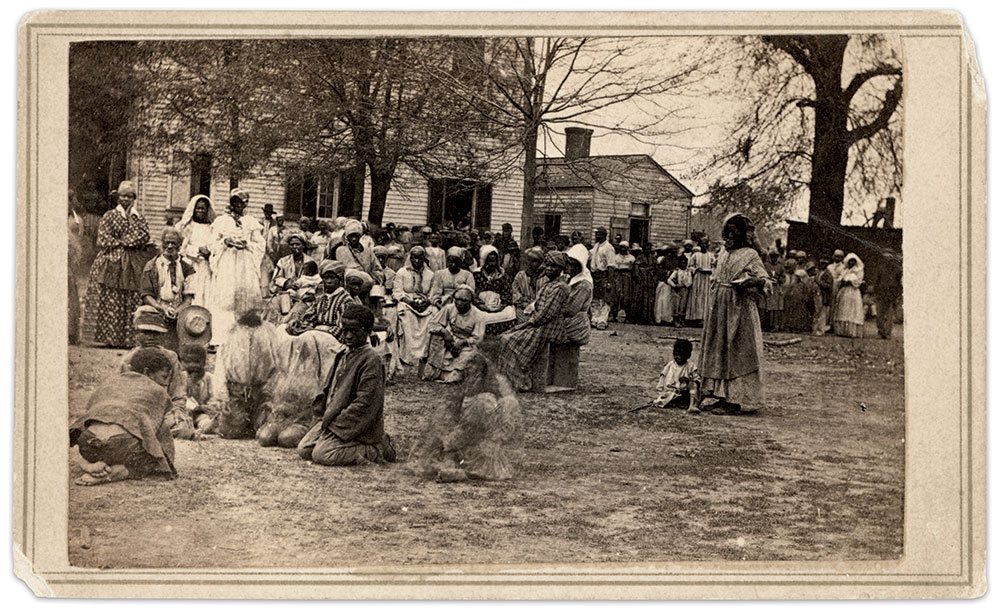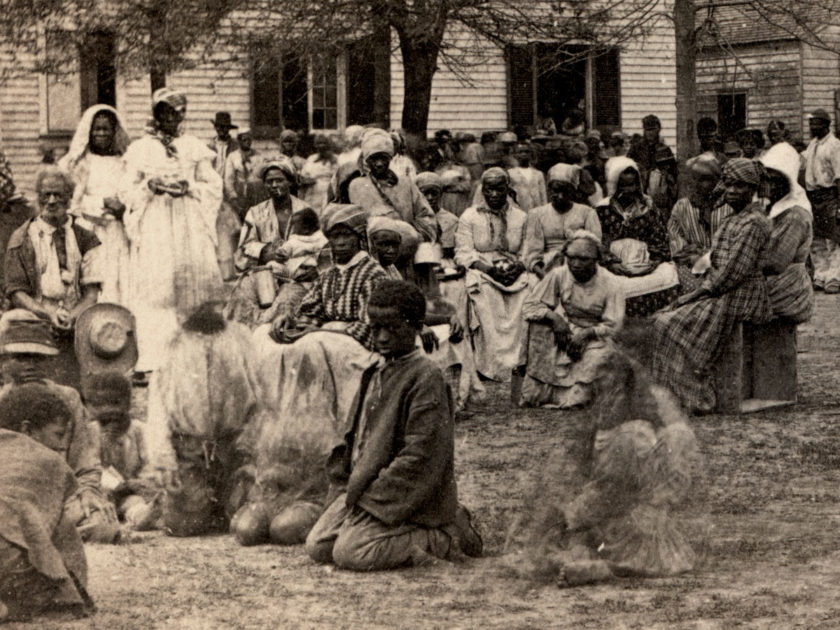By Ross J. Kelbaugh
In the 1860 U.S. Census, Louisiana enumerated 331,726 Black and mulatto enslaved persons and 18,647 free colored individuals. With the occupation of the state by the Union army, a decision was made that they were “contraband of war,” and would not be returned to their rebel masters. What started as a trickle of enslaved persons seeking refuge behind federal lines quickly became a flood.
To deal with the issues of providing care to these refugees, at least 35 Contraband Camps were established in the state to organize relief efforts. Visual documentation of these camps was limited, as photographers were more interested in producing images that could be sold to the Union troops passing through or stationed in the area. This carte de visite represents perhaps the only one taken in the area, and among the few taken in the South that recorded this aspect of the war.

Surviving examples have varying written descriptions. These range from “Contraband Quarters” to “Contraband Camp Formerly used as a Female Seminary.” But where was it taken? One example places it in Baton Rouge. This recently discovered example has a manuscript notation on the reverse stating its location as the “Bullard Plantation, 1864.” This could refer to the property of Charles Adam Bullard in Natchitoches Parish.
Bullard, a Harvard graduate from Massachusetts who had migrated to Louisiana before hostilities, was a successful attorney and judge elected to the Louisiana legislature. The 1860 Slave Schedule recorded his ownership of 14 enslaved persons. The Bullard Mansion, built in 1832, was used as a convent for the Religious Society of the Sacred Heart by 1856. A school building was added to the site in 1857. The property eventually became the site of present-day Northwestern State University.
None of these existing views identify the photographer. But evidence points to the partnership of McPherson & Oliver. William D. McPherson and his partner Oliver (first name currently unknown) operated a Baton Rouge photography studio at the time of the state’s secession, which they continued in operation after Union occupation. In addition to studio portrait photography business, they took their darkroom out to record many scenes around the area to sell to their Northern visitors.
Perhaps this group was recorded standing behind the school erected on the Bullard property repurposed to provide shelter for contraband. Few men were in the group, perhaps as a result of major recruiting efforts in the area to fill the ranks of the U.S. Colored Troops after the issuance of the Emancipation Proclamation. A Union soldier stands in the middle. But who are these people captured in this rare moment? Though their identities currently remain unknown, their inclusion in this group portrait remains as evidence of their personhood; an opportunity denied to millions of those others enslaved. It serves as an important record in the American memory.
SPREAD THE WORD: We encourage you to share this story on social media and elsewhere to educate and raise awareness. If you wish to use any image on this page for another purpose, please request permission.
LEARN MORE about Military Images, America’s only magazine dedicated to showcasing, interpreting and preserving Civil War portrait photography.
VISIT OUR STORE to subscribe, renew a subscription, and more.

